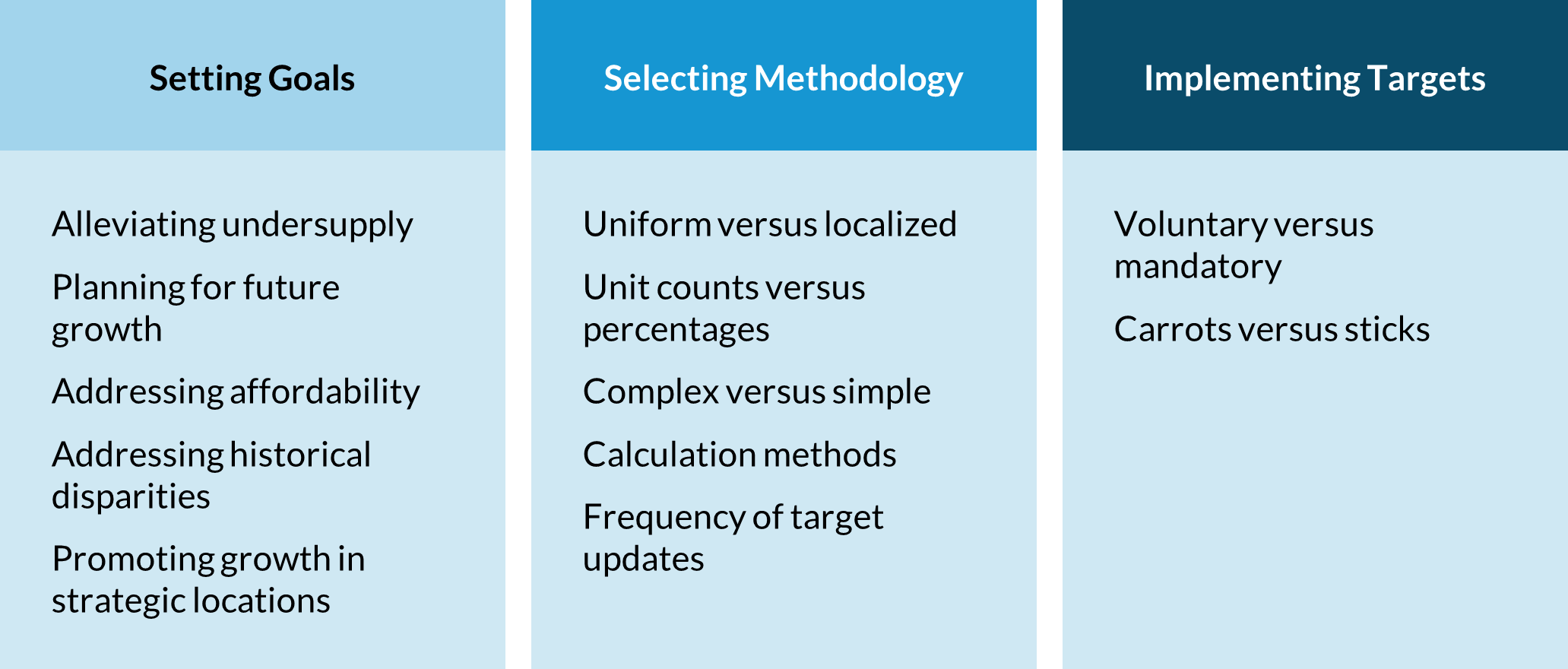
Across the country, states are finding new ways to help cities unlock housing supply and affordability. In 2023 and 2024 alone, state legislatures introduced hundreds of bills aimed at addressing affordability and supply and have considered more than 400 prohousing bills in the first half of 2025. This wave of activity reflects a growing recognition that while housing problems are often hyperlocal, local governments don’t always have the resources or political capital to solve them alone.
Moreover, states are increasingly recognizing that the stagnancy of housing isn’t just a local problem—it’s holding back regional and statewide economic growth. When housing costs rise faster than wages or when communities block new housing, the consequences ripple outward: Workers commute longer distances, employers struggle to attract talent, and regional economies suffer.
By taking a broader, statewide view, states can encourage a more coordinated response, one that ensures every community contributes its fair share to meeting housing needs rather than allowing some localities to opt out. They can tailor approaches to each state’s challenges and opportunities, like some states have done already:
- Texas limited the minimum lot size that cities can require for new single-family housing in new subdivisions, allowing for denser residential development and potentially more-affordable homes.
- Oregon expanded zoning allowances for duplexes, triplexes, and townhomes across more cities and towns in the state, aiming to boost the supply of “missing middle” housing and promote more diverse, affordable development options.
- California loosened a notorious law—the California Environmental Quality Act—which was frequently used by nonenvironmental groups to stall housing development.
- Massachusetts’s Housing Finance Agency launched the Momentum Fund, a revolving financing tool that blends state and private equity to support mixed-income housing and sustain investments over time.
To help ensure these various prohousing regulations lead to increased housing supply and equitable outcomes while holding localities accountable to growth and affordability goals, many states and regional bodies are setting housing production benchmarks. These targets help them identify gaps and establish incentives for local governments to meet housing needs.
Designing a target program to shape housing goals
Our research highlights three critical steps for states developing housing target-setting programs, which are formal initiatives that assign housing production or affordability targets to localities within a state. These include setting the goal(s) for the targets, selecting a methodology to support those goals, and designing an implantation approach that helps localities progress toward the target:
Housing Target Program Design Decisions

Christina Plerhoples Stacy, Aniket Mehrotra, and Leah Hendey, “Addressing Housing Supply Challenges through Target Setting: Policy Lessons and Implementation Considerations” (Washington, DC: Urban Institute, 2025).
The following best practices for target setting emerged:
- Clearly define the program’s goals before setting housing targets. For example, is the goal to address shortages overall? Improve affordability? Enable growth in strategic areas, such as job centers?
- Design targets to address both immediate housing needs and future demand, as addressing only one dimension can overlook critical pressures and hinder long-term progress.
- Set housing production targets that are ambitious yet grounded in realistic assessments of local capacity, recognizing that external factors beyond local control—such as interest rates, construction costs, and labor availability—may affect outcomes.
- Establish a regular update cycle for targets that balances timeliness with administrative feasibility.
- Apply transparent, data-informed methods for tracking progress so localities can easily see where they stand and what steps they can take to reach their targets.
- Avoid basing targets solely on past housing production and instead account for regional equity and unmet needs.
- Use a mix of incentives and disincentives that aligns with the legal framework, political context, and institutional capacity of the state or region to encourage local compliance with housing targets.
- Provide technical support and public tracking systems to help jurisdictions meet goals and remain accountable.
Our case studies of four states and regions reveal a variety of approaches to setting these goals. For example, Massachusetts’ Chapter 40B requires that 10 percent of a locality’s housing stock be affordable to households with low and moderate incomes and offers a builder’s remedy to streamline permitting of affordable housing and mixed-income projects in localities behind on their targets. The Oregon Housing Needs Analysis, on the other hand, sets individualized targets for both overall and affordable housing production, and the state offers technical assistance, regulatory support, and funding to localities behind on those targets. These examples illustrate that states can tailor housing target programs to fit their unique policy goals, capacities, and housing market conditions.
State housing targets create stronger communities
Setting housing targets can be a valuable foundation for states to encourage and support local action. When designed with clear metrics, strong incentives, and meaningful collaboration with local governments, they can harmonize regional, state, and local priorities to ensure housing growth happens where and at the scale it’s most needed. By pairing shared objectives with financing, subsidies, regulatory reforms, and infrastructure investments, states can make real progress toward expanding supply, improving affordability, and creating more inclusive, resilient communities.
Let’s build a future where everyone, everywhere has the opportunity and power to thrive
Urban is more determined than ever to partner with changemakers to unlock opportunities that give people across the country a fair shot at reaching their fullest potential. Invest in Urban to power this type of work.